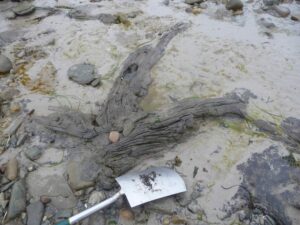
Wherever I turn just now I seem to be collecting examples of the way in which stories, once considered mere fairy tales and myths, may contain an element of description of the past. In some ways, it seems obvious. We use narrative to explain the world around us – today we have several names for these narratives: ‘text books’; ‘academic papers’; ‘theses’, among others. For a long time, we have accepted that there is a second form of narrative, today we call it ‘fiction’, and we regard it very differently; more specifically we assign some of it to a category that encompasses nothing more than imaginative leisure. Fairy tales; mythology; legend: call it what you will, this type of story needs no rooting in reality. In this way, we consider it different to the world of novelistic fiction that we all read for relaxation. Novels are, usually, bounded by the rules of the world; when they are not we assign them special status: science fiction, magic realism and so on. Even these names, however, hint at the way in which it is hard for the writers to move beyond the world they know and love.
Fairy tales are often different. Strange things happen and it can be hard to identify with the settings, actions, and motives of the protagonists. It is sometimes difficult to imagine the minds that conjured up such outlandish ideas. One thing we are usually agreed upon is that these stories are old. They have been around, apparently, since the mists of time and, no doubt, their weirdness is due in part to the way they have been embellished with telling. How many parents have hushed their children with a bedtime fable, or admonished them with an awful story?
And yet, perhaps we should not be surprised that research around the world is identifying increasing examples where the apparently bizarre domain of an ancient story conceals an element of description that seems to be rooted in reality. These stories often relate to a time when the world was a little different, they often tell us about changes that took place in the landscape. They are being collected from Australia to the Americas and locations in between. In Africa and India there are accounts of the submergence beneath the waves of ancient temples and cities. In Atlantic Canada the Mi’kmaq tell of the tensions between Glooscap (a local hero), Beaver, and Whale which led to the breaching of the inner bay of the Minas Basin and infiltration of the tides from the Bay of Fundy. There are many stories from the coastal peoples of Australia, some surprisingly similar: the Aboriginal inhabitants of the Wellesley Islands recount that you could walk out to their island home before the inundation of the sea which was due to the actions of Garnguur, ‘the seagull woman’.
Nearer to home, the land of Cantre’r Gwaelod is said to have extended westwards from the present coastlands of Wales, in the area of Cardigan Bay, and many stories and poems tell of its loss. In my home archipelago of Orkney, the Bay of Otterswick in the island of Sanday was reputedly once home to a great forest, a fact recently confirmed by fieldwork which uncovered the remains of trees subsequently dated to c. 6,500 years ago.
These stories fascinate me because they were originally recounted by people for whom the configuration of the world was truly different. In many cases, it seems they saw strange and scary events and needed to explain them. The tales give voice to the people of the past in a way that archaeology is only just beginning to understand. Of course they have changed in the telling: often exaggerated, bent, augmented and tweaked, we can’t use them as a direct retelling of the past. But, the ultimate irony of archaeology is that, while we seek to learn about people, we have to achieve it through the study of inanimate objects. People, the essence of humanity, lie a long way from the sherds of pottery, stone flakes and soil discolorations that we enthuse over. And yet, strangely, in the current application of geoscience research to the investigation of oral histories, a small sense of the colour and depth of life in the past is beginning to break through.
You must be logged in to post a comment.